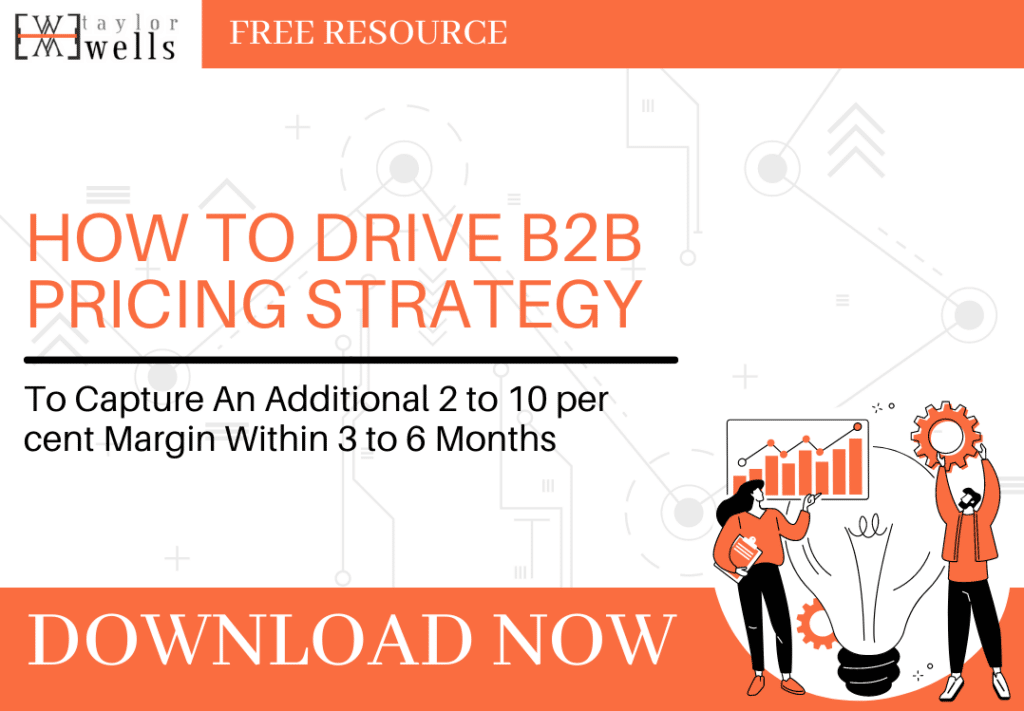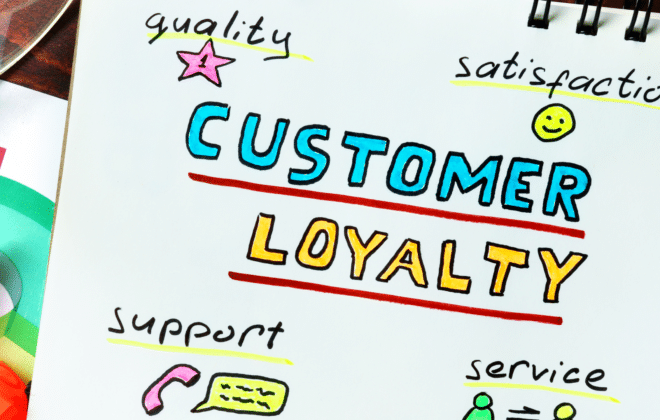
Price Increase Letter: How To Explain Price Increases To Customers? 🐖
Increasing prices in your annual price increase letter – when, why, how, by how much – is one of the most important and difficult pricing decisions you’ll ever make in a mature market.
On first glance, planning and executing a price increase can seem easy and straightforward. However, it’s not.
Table of contents for this article include:
I. Price Increase Letter: How To Explain Price Increases To Customers?
II. Price Increase: The Strange Pricing History Of Coca Cola
Price Increase Letter: How To Explain Price Increases To Customers?
All businesses go through this phase when you need to explain price increases to customers. It happens when there’s a change in your industry, hence, the resources and services needed to produce your product becomes higher. Definitely, you have to tell your loyal customers that you have to raise prices. It may seem easy but the fact is, it’s not.
Many managers think that all they need to do is:
- Work out a percentage increase in price and apply the increase across the board.
- Fill out a generic price increase letter template with stock standard reasons for the increase.
- Send the price increase letter to customers a month or so before the actual price increase happens.
- Hope and pray the price increase letter doesn’t make your customers nervous and the increase goes under the radar.
Wrong!
Price increase letters and simplistic percentage increases in prices are very risky price actions. What’s more, they lead to margin loss and angry customers. I highly recommend that you don’t do this.
It takes a lot more than a cost-plus markup and a generic price increase letter to get customers to accept your price rise. The price increase letter is immaterial when the process of setting up the price rise is all wrong.
Today, we’re going to talk about how to plan and execute a price increase properly without losing customers. We will argue that the key to a successful price is not the form or structure of the price rise letter itself or how much you increase prices by. Rather the preparation and process you take before and after a price increase. Also, the process you use to make sure your prices and price increase letter are in line with the value or performance you deliver to your customers. To demonstrate this, we’ll go through a real-world case study of a B2B distribution business in Australia. By the end of this article, you’ll have a complete understanding of how to explain prices to customers in mature markets and build some lasting partnerships in the process.
In an article for Entrepreneur.com, Cardone says that customers will accept price increases, however, they don’t want to hear excuses.
I want you to think of how your business takes a price rise and issues a price increase letter to customers for a moment…
Is it a smooth process or a time of anxiety?
Does it feel like many of your customers just want low prices and tons of value (for free)?
Do you find yourself putting off difficult price increase discussions with your customers rather than passing on costs?
Price increases are not easy.
There are lots of companies with hidden profit potential taking broad-brush price increases in their respective markets hoping that they’ll fly under the radar and stick without too much bother.
A client of mine, for example, from a manufacturer and distributor of essential business supplies, was like this. Their finance team would roll out the same 3% price rise every year knowing that their customers weren’t going to react well.
Each year though, they got more and more nervous about sending out their price increase letter to customers because they were finding every time they raised their prices, their customers would quickly ask for discounts or credit notes (almost as compensation).
After a couple of years of this, however, they were feeling the pressure: Exchange rates were fluctuating, and competition in the market was intense.
They:
- Could no longer fully absorb rising raw material costs anymore and had to pass on some of these costs to the customer
- Had no choice but to increase the prices
- Needed to get a price rise through their wholesale channels to avoid a negative EBIT situation
- Didn’t know how to explain price increases to their customers or how to make sure their price increase letter didn’t create panic and disruption in the market
Key steps in the price increase letter process:
Fortunately, this B2B distribution business understood that its current pricing system was far from perfect. There were a few executives in the business that were motivated to test their assumptions about their customers. There were a small group of people who wanted to develop a better pricing system to announce a price increase to customers and improve their overall pricing capability in general.
So, they formulated a small cross-functional project team and assigned roles, tasks, and responsibilities. Two team members were responsible for arranging some value discovery sessions with their most loyal customers to understand their needs. Including why they bought from them (the business), and the pains and problems they were helping their customers solve on a day-to-day basis.
One business manager set about conducting some hypothesis-driven research to test different price options to raise their prices. They were:
Option 1) Increase prices by offering less value at the same price.
Option 2) Increase prices without changing how they served the customer or what they offered only this time offering shallower discounts
Group 3) Increase prices by providing customers with additional value and charging an appropriate amount for it.
(All price trials were performed under experimental conditions and on a low-risk sample).
Smaller discounts or no discounts at all
When they monitored the output from these trials and sessions, they found that a considerable number of their customers, once across the total economic value of the deal, were content with much smaller discounts or no discounts at all. They also found that some customers in option two didn’t even notice that the discounts they received were marginally smaller than before – they were just as happy to receive some kind of concession.
These new insights into their customers enabled them to view their customers in a new light. They could see that they had also taken the value they delivered for granted like their customers. They now had a better understanding of how their business fits into their customer’s broader business strategy – and didn’t feel the need to discount as much to win or maintain customers.
It was obvious that price rise discussions were a pretty good opportunity to explain the total economic value of the deal and a good time to segment their customers based on their preferences.
To add…
Unlike any time before, they could see how they could help their customers achieve their financial objectives – whether generating more revenue, reducing cost, reducing the risk or driving innovation. As they understood their customer’s aspirations and objectives, they began to take the conversation away from line item prices to strategic problem-solving discussions.
As the project continued, the project team realised they needed a dedicated pricing team to manage and set prices on a full-time basis. They had reached as far as they could go themselves and had done great work. The project started because they wanted to improve how they explained price increases to customers. Now the project was something much bigger. They wouldn’t be able to explain price increases to customers unless their price architecture, strategy, and people were set up properly too.
It was now time to hire specialist pricing talent in the business to run pricing for the business on a full-time basis. They then set up and hired a small team of 1 x strategic pricing managers and 2 x analysts to manage $300M revenue (as the first test case).
Breakthrough: The team later grew in size as they took on more revenue to manage. They now have a pricing function of well over 20 people and growing.
Within the first 100 days, the team reviewed the business’ price architecture. They started with its list price and discount structure. They found that their prices were all over the place! Price ranges were everywhere, with lots of outliers and RRP (recommended retail price) that were way too high and some that were way too low.
It quickly became apparent that the average selling price was falling each time they issued a price rise letter. Because there was no price variation across SKUs. Pass-through rates were low and price dispersion by SKU was wide. The top 10% of their portfolio was their high-value and top-selling products. They also had a long of list products outside the top 10%. So they didn’t know which ones were generating profit for the business.
So the new pricing team changed its approach to pricing and introduced SKU price optimisation techniques to set variable price increases across their long tail of SKUs. Part of this involved redesigning their product data hierarchy. This includes price elasticity modelling and re-classifying their products into standard commodity items, traffic volume drivers and profit generators. From here, they introduced tactical discounting and set up active rebates with suppliers to ensure agreements were maximising margins.
Overall, the initial price improvement project and pricing team intervention generated a .5% additional margin for the business in less than six months. Approximately, $1.5M – covering, in turn, the cost of the program and new pricing team many times over.
Implications
If your customers don’t understand (or have forgotten temporarily) the value you deliver them, then they will not take a price rise well – even if you have a well-crafted price rise letter.
If you haven’t reminded or sold the total economic value of the deal to your customers and then decide to take an X per cent price increase across the board, it’s guaranteed that customers will complain and focus on the price increase and not the value of the deal.
〉〉〉 Get Your FREE Pricing Audit 〉〉〉
Conclusion
In this article, we discussed how to take a price increase in a mature market. We walked through a real-world case study of a B2B distribution business. Also, we looked at the key steps they took to explain their price increases to customers. That the key to a successful price is not the form or structure of the price rise letter itself or how much you increase prices.
Rather, it’s the preparation and process you take before, during and after a price increase. This refers to the process you use to make sure your prices and increases are in line with the value or performance you deliver to your customers. It’s important that you handle a price increase fast and in a genuine manner to ensure that your customers understand the situation and are willing to stick through it.
We found that a well-structured price rise should provide you with options. This includes the trade-offs of each option and guidance on:
- Where to move
- How much to increase prices
- How to configure a deal to benefit you and your customers.
It’s important that you handle a price increase fast and in a genuine manner to ensure that your customers understand the situation and are willing to stick through it.

Price Increase: The Strange Pricing History Of Coca-Cola
Price Increase: What Can We Learn From The Strange History Of Coca-Cola Pricing Strategy
In modern pricing and investment circles, pricing power is often regarded as the holy grail, meaning the ability to consistently adjust prices whilst growing profitability. Great investors like Warren Buffet regard it as a key component of their investment portfolios – as it demonstrates a strong brand or market presence.
He quoted, ” The single most important decision in evaluating a business is pricing power. If you’ve got the power to raise prices without losing business to a competitor, you’ve got a very good business. And if you have to have a prayer session before raising the price by 10 per cent, then you’ve got a terrible business.”
One of his most famous investments is in Coca-Cola. Although, the strange thing is that for most of its history, Coca-Cola did not implement a single price increase at all.
Why did Coca-Cola not implement a price increase?
The price of a 6.5-ounce bottle of Coke was set at 5 cents from 1886 to 1959. That’s more than 70 years of nominal price rigidity! Isn’t it interesting to note that they were able to maintain that price despite the events that occurred during the 70-year period? The founding of another soft drink industry happened around that time. Let’s not forget, of course, World War I and II, the Great Depression, changing taxes and numerous regulatory interventions. Still, the nickel price of Coca-Cola never changed.
It started in 1899 when two lawyers from Chattanooga, Tennessee went to Asa Candler (Coca-Cola President) to buy Coca-Cola bottling rights. Candler sold the rights to the two lawyers for one dollar. It is surmised that Candler sold the bottling rights cheaply because, during that time, soda fountains were prevalent in the United States. He thought that bottling will never thrive. In the contract, he was granted the ability to “pull their franchise if they ever sold an inferior product”. Unluckily, the agreed-upon price of the contract had no expiration date. Thus, Candler had basically agreed to sell Coca-Cola at the same price forever.
As opposed to Candler’s belief that bottling will not flourish, it did in 1928. It even surpassed fountain sales. Consequently, Coca-Cola had to sell their product for a fixed price for having a non-expiring contract. What they could only do was maximise the number of products sold but minimise the price. In order to achieve that, Coca-Cola began a vigorous marketing campaign to associate its product with the five-cent price tag. They provided incentives for retailers to sell at the same price. The campaign was a great success. In 1921, Coca-Cola was able to renegotiate the bottling contract. The five-cent price remained for over three more decades (the late 1950s).
Technical constraints restricting a price increase
Another factor that prevented Coca-Cola from increasing its price aside from the non-expiring contract was the single-coin vending machine technology. It limited the company’s price adjustment options because vending machines were not capable of dispensing change. Hence, increasing prices was extremely difficult due to the capital expense of updating the machines.
Coca-Cola owned over 85% of the 460,000 vending machines in the United States in 1950. These vending machines were estimated between $286 million and $900 million (in 1992 dollars) based on vending machine prices at the time. The Coca-Cola company believed that it would reduce their sales and cost money to require multiple coins (e.g., six pennies or one nickel and one penny for six-cent Coke). Since they were reluctant to double the price, they were forced to keep the price of Coca-Cola at five cents.
The company, however, still explored increasingly innovative ideas to increase its price. In 1953, they even approached the U.S. Treasury Department and requested that they mint a 7.5-cent coin. The Treasury did not grant their request. Coca-Cola attempted again for a price increase. Briefly, they implemented a strategy where one in every nine vending machine bottles was empty. They called the empty bottle an “official blank”. Meaning, one in nine customers would have to insert two nickels in order to get a bottle of Coke. This in effect raised the price to 5.625. However, Coca-Cola did not implement this strategy on a national scale.
〉〉〉 Get Your FREE Pricing Audit 〉〉〉
Conclusion
This story may appear to be ancient history but it raises some interesting questions regarding the company’s ability to grow market share with a penetration pricing strategy It is clear that Coke became the most recognised brand in the western world whilst tied to this static pricing model. Despite having a fixed price for so many years, Coca-Cola was still able to make a profit.
See our recent blog on cognitive bias when hiring.
Click here to download the whitepaper.
For a comprehensive view and marketing research on integrating a high-performing capability team in your company,
Are you a business in need of help to align your pricing strategy, people and operations to deliver an immediate impact on profit?
If so, please call (+61) 2 9000 1115.
You can also email us at team@taylorwells.com.au if you have any further questions.
Make your pricing world-class!
Related Posts
Leave a Reply Cancel reply
Categories
- marketing strategy (26)
- Organisational Design (14)
- Podcast (114)
- Pricing Capability (87)
- Pricing Career Advice (10)
- Pricing Recruitment (19)
- Pricing Strategy (289)
- Pricing Team Skills (13)
- Pricing Teams & Culture (24)
- Pricing Transformation (47)
- Revenue Model (25)
- Sales Effectiveness (27)
- Talent Management (7)
- Technical Pricing Skills (35)







